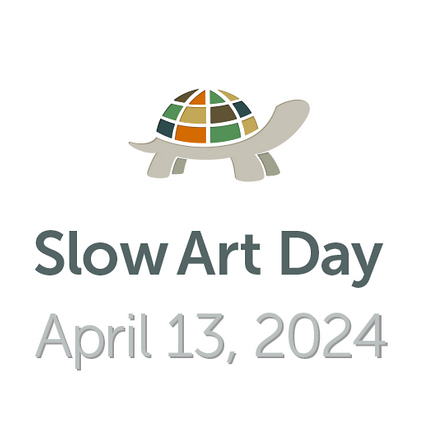"It’s not what you look at that matters, it’s what you see."
Henry David ThoreauFounded in 2010, Slow Art Day is a global event (more than 1,500 museums and galleries have participated) with a simple mission: help more people discover for themselves the joy of looking at and loving art.
Why slow?
When people look slowly at a piece of art they make discoveries. The most important discovery they make is that they can see and experience art without an expert (or expertise).
And that’s an exciting discovery. It unlocks passion and creativity and helps to create more art lovers.
"With the “slow art movement,” the art world, too, is taking stock of how a broader cultural bias toward speed and mass consumption has informed museum experiences.
Studies suggest that the average museumgoer looks at an artwork for less than 30 seconds. And with crowds that seem to push you from one piece to the next, overwhelmingly large exhibitions, and a dismal lack of seating options, museum spaces sometimes seem to encourage this “more is more” ethos. But on “Slow Art Day” every April, museums around the world offer programming that guides visitors in looking more patiently".
read more: www.washingtonpost.com
- Look not only at what is pictured, but how it is pictured.
- What kind of colors has the artist used? Are they bright, muted, or somewhere in between?
- Can you see how the color has been applied or is the color smooth and blended?
- Is there a sense of deep, moderate, shallow, or indeterminate space? Is that space consistent throughout the picture?
- Is space clear and well defined or atmospheric? What about how the picture was painted gives it that quality?
- Is there the suggestion of a directional light source, of light coming from a one side or the other?
- Can you see lines anywhere, whether painted lines or strong edges created by color-to-color areas? Where are lines used and how?
- What other observations can you make?
- How is the installation piece different from the paintings?
- What is the unifying theme of the installation?
Here is another way to go about it:
After 1 minute:
What is going on in this work?
Where does your eye go first?
Why?
After 2 minutes:
Why might the artist have used these colors?
What emotions seem to be expressed in this work?
After 3 minutes:
What medium or techniques has the artist used?
lf the artist were here with you, what questions would you ask?
After 4 minutes:
Take a look at the art from a different angle ( close up, far away, etc.).
How does physical distance change your perception of the work?
After 5 minutes:
What would you title this work?
Why?
Now look at the label. How is the title similar or different than the one you came up with?

